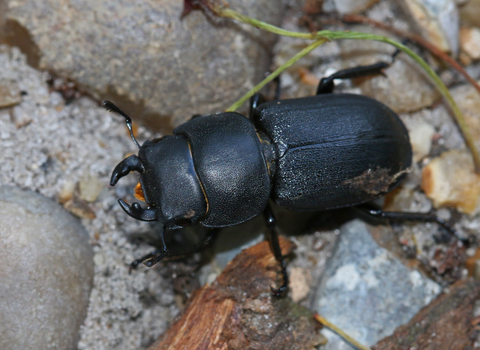
Lesser stag beetle ©Wendy Carter
Lesser stag beetle
The lesser stag beetle may be smaller than its famous cousin, but it is still a large beetle with large jaws. It can be seen in woods, parks and hedgerows during summer, and depends on dead wood.

Lesser stag beetle ©Wendy Carter